Refinancing For Home Improvements: Value Add Renovations
Updated: Jan 5
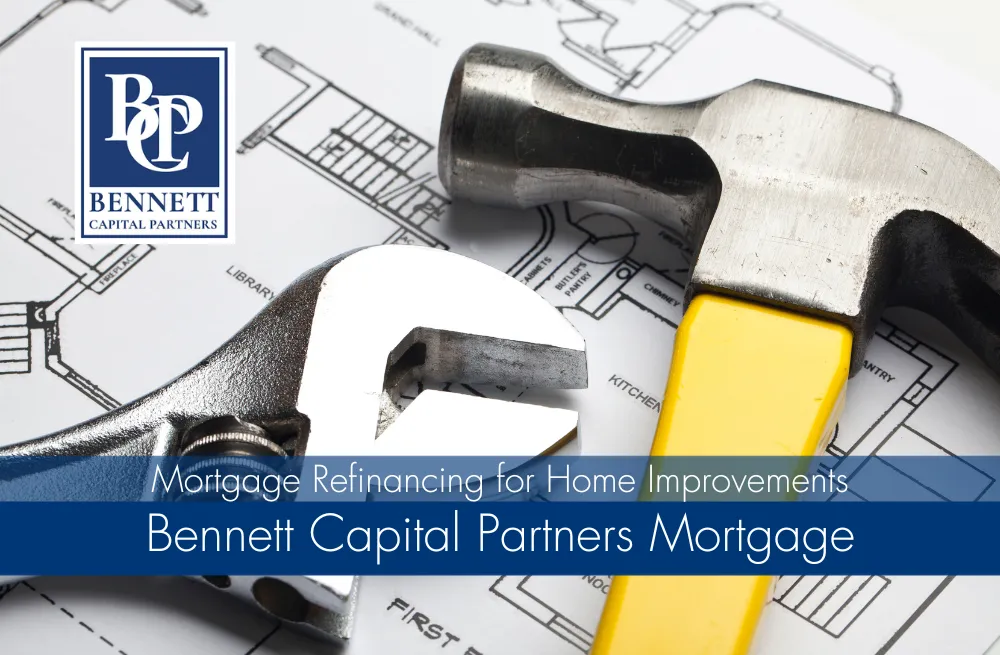
Are you considering making significant home improvements, but unsure of how to finance your project? Mortgage refinancing for home improvements might be the perfect solution. By unlocking your home's equity for renovations, you can make those much-needed updates without stressing about the financial burden.
In this comprehensive guide, we'll delve into the various refinancing options available, explain how to tap into your home's equity, and help you make an informed decision that suits your specific needs and circumstances. Transform your living space while potentially increasing your property's value with the right refinancing strategy.
Let's get started!
Quick Navigation - Click the link below to jump to that section..
What Is Home Equity?
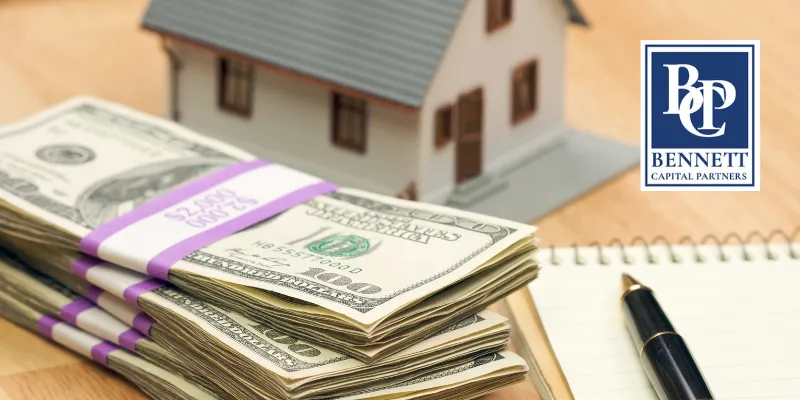
✔ Home Equity is the value of ownership of a home, calculated by subtracting the outstanding balance of all liens on the property from the current market value of the home.
✔ Home Equity can be calculated by taking the current market value of the home, subtracting any liens or mortgages on the property, and subtracting any outstanding loans or lines of credit taken out against the home.
✔ A Home Equity Loan or a Home Equity Line of Credit is a type of loan that allows homeowners to access their equity to make home improvements, pay for tuition, consolidate debt, or cover other large expenses.
✔ Home Equity Loans offer competitive interest rates and can be used as a tax deduction.
✔ Home Equity Loans are often beneficial for homeowners who need to make repairs or improvements to their home since the loans often cover the entire cost of the project.
✔ Home Equity Loans also offer flexible repayment plans and potential tax savings, making them an attractive option for homeowners looking to finance significant projects.
Home Equity Definition
As homeowners embark on the journey of mortgage refinancing for home improvements, it is essential to understand the concept of home equity and its role in funding renovations.
Home equity refers to the portion of a property that an individual truly owns, as opposed to what they owe on their mortgage. The more payments made towards the principal balance of a loan, the greater the amount of home equity accumulated.
To calculate home equity accurately, one must first determine the current market value of their property and then subtract any outstanding liens or mortgages against it. For instance, if a homeowner has a house valued at $300,000 with a remaining mortgage balance of $200,000, their available home equity would be $100,000 ($300,000 - $200,000).
This sum can be accessed through various options such as refinance vs home equity loan or refinancing vs home equity loan; each method offers unique benefits depending on an individual's financial situation and renovation goals.
By unlocking this wealth trapped within properties via methods like refinance home loan equity or obtaining a separate home equity refinance loan, many people are able to fund significant changes to improve living conditions while simultaneously increasing overall property value.
It is crucial for individuals considering these finance alternatives to evaluate all possible routes carefully before making decisions regarding how best to leverage their hard-earned assets for necessary renovations.
How To Calculate Home Equity
In order to utilize home equity for renovations and other improvements, homeowners must first determine the amount of equity available in their property.
This process involves calculating the difference between a property's current market value and any outstanding mortgage balances or liens against it.
To accurately calculate home equity, one can obtain an appraisal or use online resources such as real estate websites to estimate their house's value before subtracting the remaining loan balance.
Unlocking this hidden wealth within properties is crucial when considering options like mortgage refinancing or obtaining a separate home equity loan to fund various renovation projects.
By tapping into these financial resources, individuals are able to make significant changes that not only improve living conditions but also increase overall property value.
However, it is essential for homeowners to carefully weigh all possible avenues before making decisions on how best to leverage their hard-earned assets for necessary renovations.
Ultimately, the ability to calculate home equity plays a vital role in determining suitable financing options for those looking to invest in home improvements using existing assets.
By understanding the concept of home equity and its significance in funding renovation endeavors, homeowners can better evaluate whether refinance or utilizing a separate home equity loan would be most advantageous in achieving their objectives while preserving long-term financial stability.
Home Equity Loan Benefits
A thorough understanding of home equity and its potential uses is crucial for homeowners seeking to make the most of their financial assets. One key aspect in this regard involves exploring various home equity loan benefits associated with funding renovations or other home improvements.
Home equity loans, also known as second mortgages, enable individuals to borrow against the value of their property by unlocking equity that has accumulated over time, providing a source of funds for necessary upgrades or repairs. In comparison to alternative financing options such as refinance cash out or cash out refinancing, taking advantage of home equity loan benefits may offer several advantages for those looking to invest in their property's worth.
For instance, interest rates on these types of loans are often lower than credit cards or personal loans, making them more cost-effective for long-term borrowing purposes. Additionally, repayment terms can be tailored to suit individual circumstances and budgetary constraints, allowing homeowners greater flexibility when managing their renovation expenses. Furthermore, accessing funds through a dedicated home equity loan may have less impact on overall mortgage structure and payment schedules compared to refinancing arrangements.
In summary, leveraging the power of home equity through appropriate lending mechanisms presents an attractive option for homeowners aiming to enhance both living conditions and property values through strategic investments in renovations and improvements. By considering all available avenues – including weighing up the pros and cons of utilizing separate home equity loans versus engaging in cash-out refinancing – individuals can optimize their use of existing resources while maintaining sound financial footing for future endeavors.
Types Of Mortgage Refinancing For Home Improvements
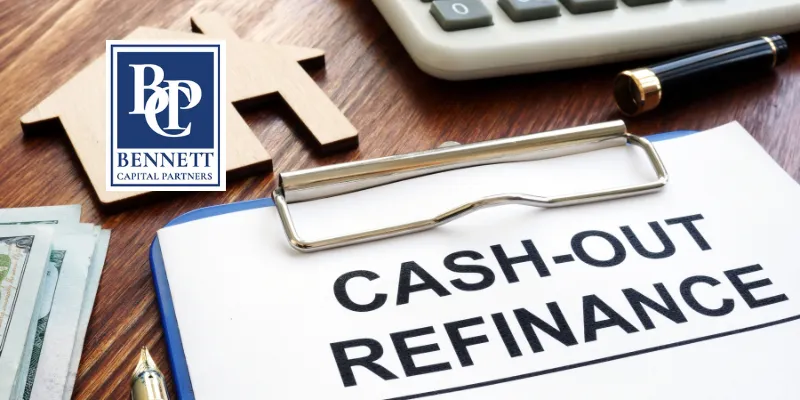
Cash-out refinancing is a popular option for homeowners looking to utilize their home equity to finance home improvements. This type of refinancing involves replacing a current mortgage loan with a larger one and taking the difference in cash.
A home equity loan is a fixed-rate loan that utilizes the equity in one’s home as collateral for the loan.
A Home Equity Line of Credit (HELOC) is a type of loan that is secured by the equity of one’s home and is typically used for financing home improvements. HELOCs offer more flexibility than home equity loans as the borrower can choose when to borrow, the amount to borrow and when to repay.
The interest rate on a HELOC is usually adjustable, making it a more suitable option for those who plan to pay off the loan within a shorter period of time.
Both cash-out refinancing and home equity loans are popular options for financing home improvements, however, each type of loan has its own advantages and disadvantages.
It is important to consider all options and research each one in order to get the best loan terms that suit one’s needs.
Cash-Out Refinancing
An advantageous method for homeowners to access funds for renovations is through a cash-out refinance. In this type of refinancing, the homeowner replaces their existing mortgage with a new loan that has a higher principal balance, allowing them to 'cash out' and receive the difference between the two loans in cash.
This method can be highly beneficial as it allows individuals to take advantage of lower interest rates compared to other financing options, such as credit cards or personal loans.
The process of obtaining a cash-out refinance involves using online tools like cash out refinance calculators to determine if this option is suitable based on factors such as current home equity and desired renovation expenses. Additionally, homeowners need to research potential lenders offering competitive cash out refinance rates before committing to any specific financial institution.
It is crucial for homeowners considering refinancing with cash out options to thoroughly assess their financial situation and future plans since they will be borrowing against the equity built up in their homes.
When deciding whether a cash-out refinance is an appropriate choice for funding home improvements, it's essential to weigh its benefits against alternative methods of accessing home equity such as home equity loans or lines of credit (HELOCs). While each approach varies in terms of features and costs, what sets apart cash-out refinances from these alternatives is that the former typically offers lower-interest debt consolidation opportunities.
Ultimately, selecting the most fitting solution depends upon individual circumstances and priorities; however, utilizing one's home equity via cash-out refinancing can indeed offer significant advantages when undertaking costly renovations projects.
Home Equity Loan
Another method of mortgage refinancing for home improvements is through a home equity loan, which allows homeowners to unlock the value in their property by borrowing against the equity they have built up over time.
This type of financing can be an attractive option for those seeking to access funds for renovations without altering their primary mortgage terms.
Home equity loans provide a lump sum amount based on a percentage of the homeowner's equity, enabling them to use this capital towards various improvement projects.
When considering a home equity loan as a solution for funding renovations and home improvements, it is essential to understand its distinct features compared to other forms of mortgage refinancing.
Unlike cash-out refinances, home equity loans are separate from the existing mortgage and typically come with fixed interest rates and repayment periods.
This feature can offer stability and predictability for borrowers who prefer not to refinance their entire mortgage or do not qualify for lower-interest options such as cash-out refinances.
In assessing whether leveraging one's home's equity through a home equity loan is suitable for financing renovation costs, homeowners must evaluate factors such as current levels of debt, desired project expenses, and future financial plans.
Moreover, comparing interest rates and fees associated with different lenders offering these products will aid in selecting the most advantageous option.
Ultimately, using home equity loans as a means of accessing capital provides another viable alternative in unlocking one's hard-earned equity for renovations while preserving the original mortgage structure.
Heloc
In addition to cash-out refinances and home equity loans, another option for mortgage refinancing to fund home improvements is a Home Equity Line of Credit (HELOC).
Similar to the previously discussed methods, HELOCs also allow homeowners to tap into their property's equity without altering the terms of their primary mortgage. However, unlike cash-out refinance or home equity loans that provide lump-sum disbursements, HELOCs function as revolving credit lines secured by one's home as collateral.
This form of borrowing offers greater flexibility in accessing funds for renovations and other improvement projects since it allows individuals to draw upon their credit line as needed during a specified period known as the 'draw phase.'
Borrowers only pay interest on the amounts they utilize, which can result in lower overall costs compared to taking out an entire loan amount upfront. Additionally, HELOCs typically have variable interest rates tied to market fluctuations; however, some lenders may offer fixed-rate options for added stability.
When evaluating whether a HELOC is appropriate for financing home improvements, consider factors such as desired renovation expenses, current debt levels, refinance rates offered by various institutions, and future financial goals.
In summary, when exploring types of mortgage refinancing solutions for funding home improvements and renovations, homeowners should carefully weigh the advantages and drawbacks associated with each method – including cash-out refinance options like traditional refinances or home equity loans versus more flexible alternatives such as HELOCs – before selecting the most suitable approach based on individual circumstances.
Cash-Out Refinancing For Home Improvements

Cash-Out Refinancing is a process whereby a homeowner takes out a new loan to pay off their existing mortgage and takes out additional funds for home improvements.
The requirements for Cash-Out Refinancing usually include having an established equity in the home, a good credit score and an income that can sustain the new loan.
It is important to understand the risks associated with Cash-Out Refinancing, such as the potential for higher interest rates and stricter repayment terms.
Furthermore, there may be additional costs associated with the loan that must be considered.
Cash-Out Refinancing Process
Undertaking a cash-out refinance for home improvements may be an advantageous method of financing renovations, as it allows homeowners to unlock the equity within their property.
This process involves refinancing one's mortgage with a new loan that has a higher principal balance than the existing mortgage, thereby providing the homeowner with access to additional funds for home improvement projects.
The refinancing process commences by obtaining multiple quotes from various lenders and selecting one that offers competitive rates and terms suitable for the borrower.
The primary requirement when pursuing a cash out mortgage refinance is having sufficient home equity – typically at least 20% – thus enabling homeowners to borrow against this sum while still maintaining an acceptable loan-to-value ratio (LTV).
Additionally, borrowers must satisfy credit score requirements, demonstrate stable employment history, and have adequate debt-to-income ratios in order to qualify for this type of loan product.
It is essential that individuals thoroughly assess their financial situation before embarking on this course of action; failure to meet these prerequisites can result in denial of approval or unfavorable interest rates.
While there are advantages associated with utilizing a refinance mortgage cash out option – such as lower interest rates compared to other forms of borrowing like personal loans or credit cards – potential drawbacks should also be carefully considered.
For instance, extending the term of one's mortgage can lead to increased overall interest payments over time.
Moreover, closing costs incurred during the refinancing process might negate some benefits realized through unlocking equity for home renovation financing purposes.
As such, weighing both positive and negative aspects prior to initiating this endeavor will enable informed decision-making regarding whether accessing home equity via cash-out refinancing presents an optimal solution for funding desired improvements.
Cash-Out Refinancing Requirements
In order to successfully undertake a cash-out refinancing for home improvements, it is crucial for homeowners to thoroughly understand and meet the various requirements associated with this financial option.
As previously mentioned, sufficient equity in one's property is a key prerequisite, as well as fulfilling credit score criteria, stable employment history, and acceptable debt-to-income ratios.
Utilizing tools such as a mortgage cash-out refinance calculator can assist individuals in determining their eligibility and potential benefits of this financing method.
Additionally, researching the best cash-out refinance rates available from different lenders plays an important role in ensuring that borrowers secure advantageous terms when unlocking equity for renovations.
When considering cash-out refinancing as a means of funding home improvement projects, it is essential to be cognizant of the inherent risks involved if the aforementioned requirements are not met.
Inability or failure to satisfy these conditions may result in denial of loan approval or being subjected to unfavorable interest rates which could ultimately outweigh any advantages derived from accessing additional funds through a refi cash-out process.
Furthermore, unexpected changes in personal circumstances - such as loss of employment or increased expenses - might render repayment more challenging than initially anticipated.
Therefore, careful evaluation of one's financial status alongside thorough research into the specifics surrounding mortgage refinancing options will prove invaluable in establishing whether embarking on a cash-out refinancing journey proves beneficial for achieving desired renovation goals.
By diligently assessing all relevant factors prior to making a decision, homeowners can ensure they select the most appropriate course of action according to their unique needs while minimizing exposure to potential pitfalls related to leveraging home equity for improvement purposes.
Home Equity Loan For Home Improvements

A home equity loan is a type of loan that uses the equity in a person's home as collateral to secure the loan.
Loan requirements usually involve a credit score and income verification, as well as the need for an appraisal of the home.
The main benefit of a home equity loan for home improvements is that it is typically lower in interest than other forms of credit.
Home equity loans can also provide access to large sums of money quickly.
However, it is important to be aware of the risks associated with taking out a home equity loan, such as the possibility of foreclosure if payments are not made on time.
Furthermore, the value of the home may not increase as much as expected, resulting in a loss of the equity invested in the improvement.
Loan Requirements
Undertaking home improvements often necessitates a significant financial investment, and homeowners may resort to unlocking equity in their property through mortgage refinancing for renovations. This strategy allows individuals not only to make necessary upgrades but also potentially increase the overall value of their homes.
Before embarking on this path, it is crucial to understand the loan requirements associated with obtaining a home equity or debt consolidation loan. Firstly, lenders typically assess an applicant's credit score when evaluating eligibility for a home renovation loan. A strong credit history demonstrates responsible borrowing habits and increases the likelihood of approval for mortgage refinancing. In addition to credit scores, lenders will consider factors such as the borrower's income stability, current employment status, outstanding debts, and payment capacity. These elements help determine whether an individual can comfortably manage repayments while simultaneously covering other financial obligations.
Another critical aspect of loan requirements relates to the amount of available equity within the property itself. Unlocking equity entails using one's existing ownership stake in a house as collateral against borrowed funds needed for renovations or other purposes like debt consolidation. Lenders generally require that applicants have sufficient home equity – usually around 80% Loan-to-Value (LTV) ratio – before they approve any refinance requests for renovations or other projects.
As such, homeowners must carefully evaluate their financial standing and ensure they meet these stringent prerequisites before committing to this type of financing solution.
Loan Benefits
Upon meeting the necessary requirements and successfully obtaining mortgage refinancing for home improvements, homeowners can experience several loan benefits that make this financing option attractive.
One key advantage of unlocking a home's equity through refinancing is that it enables individuals to fund substantial renovations without depleting their savings or resorting to high-interest credit cards.
By tapping into the built-up value in their property, borrowers obtain access to lower interest rates typically associated with secured loans.
Another significant benefit of using home equity for renovation projects relates to potential tax deductions on interests paid towards such refinance options.
In some cases, eligible homeowners may claim deductions on these expenses when filing income taxes, thereby yielding additional financial incentives for undertaking improvement works.
Furthermore, investing in well-planned upgrades often results in enhanced comfort and functionality while simultaneously boosting a property's market value – an essential consideration for those planning to sell or rent out their homes in the future.
Lastly, by opting for cash-out refinance or other home equity-based solutions, borrowers gain greater flexibility in managing their finances compared to traditional lending products like personal loans or lines of credit.
These flexible repayment terms help ensure that individuals can comfortably manage both existing debts and funds earmarked for renovation purposes, ultimately promoting responsible borrowing behavior alongside improved living conditions within one's abode.
Loan Risks
Despite the numerous advantages associated with mortgage refinancing for home improvements, it is crucial to recognize and assess potential loan risks before committing to this financing solution.
As with any form of borrowing funds, leveraging a property's equity to finance renovations carries inherent risks that homeowners should carefully evaluate in order to make informed decisions.
One notable risk tied to cash-out refinance options involves the possibility of increased debt burdens; by tapping into their home equity, borrowers may inadvertently overextend themselves financially, leading to repayment challenges down the line.
Furthermore, there exists the danger of diminished home value if renovation projects fail to yield desired results or market conditions shift unfavorably during the course of one's loan term.
In such instances, individuals might find themselves owing more on their mortgages than their homes are worth – an unfavorable situation known as being 'underwater' on a loan.
This predicament can prove particularly problematic when attempting to sell or refinance properties in the future.
Lastly, while lower interest rates usually accompany secured loans like those derived from home equity, these favorable terms often come at the expense of longer repayment periods compared to unsecured lending products.
Consequently, borrowers must remain attentive towards both short- and long-term implications of extending their financial obligations through mortgage refinancings for home improvement purposes.
By thoroughly weighing these considerations against potential benefits and individual circumstances, homeowners can better determine whether utilizing their built-up equity remains a prudent choice for funding enhancements within their residences.
Home Equity Line Of Credit (Heloc) For Home Improvements
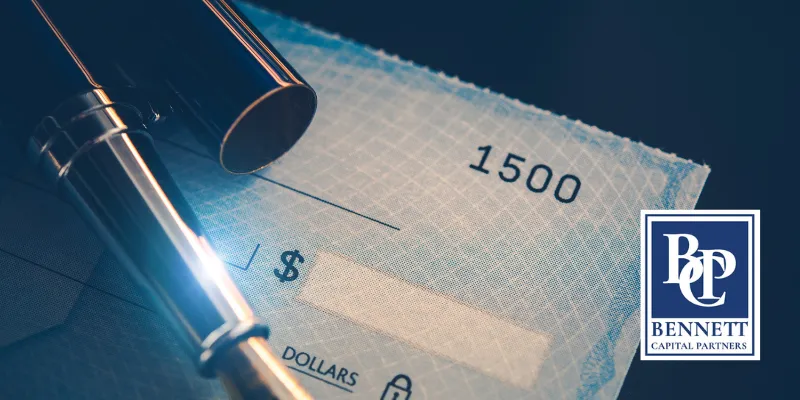
Obtaining a Home Equity Line of Credit (HELOC) involves the homeowner taking out a loan secured by the equity in their home and often requires the completion of an application, proof of income and other financial documents.
Benefits of a HELOC include a lower interest rate than other types of financing, potential tax deductibility and the potential to significantly reduce loan repayment time.
Risks associated with a HELOC include the possibility of increased interest rates, a potential increase in monthly payments, and the potential for foreclosure if payments are not made in full and on time.
Additionally, a HELOC may be subject to a variable interest rate, which can affect the amount of payments needed to repay the loan.
Furthermore, there may be additional fees and charges associated with taking out a HELOC, including closing costs, annual fees and fees for late payments.
6. Finally, a HELOC can be a powerful tool for homeowners to access the equity in their home for home improvements, but it is important to weigh the benefits and risks before taking out a HELOC.
Process For Obtaining A Heloc
The process of obtaining a Home Equity Line of Credit (HELOC) for home improvements involves several key steps, which ultimately allow homeowners to unlock their home's equity for renovations.
Initially, one must approach a financial institution, such as a bank or credit union, to apply for the HELOC.
The lender will then evaluate various factors including the applicant's credit score, income, outstanding debts and property value before determining eligibility and approving the desired amount.
Subsequently, mortgage refinancing may be necessary in order to secure more favorable terms on the loan or lower interest rates; this can increase overall savings throughout the course of repayment while simultaneously freeing up funds for important home improvements.
A crucial aspect of this step is selecting an appropriate term length: shorter periods usually offer lower interest rates but require higher monthly payments whereas longer durations entail smaller installments but accrue greater total interest costs over time.
This decision should be carefully considered based on individual financial circumstances and long-term objectives.
Lastly, once approved and granted access to the HELOC funds, it becomes essential that these finances are utilized prudently towards achieving planned renovations and upgrades within budgetary constraints.
By doing so effectively, homeowners not only enhance their living spaces but also capitalize on increased property values resulting from strategic investments in home improvement projects.
In essence, following this comprehensive process ultimately empowers individuals to leverage their existing assets efficiently without overextending themselves financially – thereby unlocking untapped potential embedded within one's dwelling place through astute management of resources at hand.
Benefits Of A Heloc
The benefits of a HELOC for home improvements are manifold, offering homeowners considerable advantages over other financing options such as cash-out refinance or personal loans.
One primary benefit pertains to the flexibility inherent in this type of credit line; borrowers can draw on their equity as needed for renovations and repay only the amount utilized along with accrued interest.
This stands in contrast to traditional mortgage refinancing wherein individuals must commit to fixed loan amounts and terms up front – potentially resulting in inefficient use of funds or unforeseen financial strain.
Furthermore, HELOCs often feature lower interest rates than alternative borrowing methods due to their secured nature against one's property value.
Another notable advantage is that a HELOC allows homeowners to maintain existing mortgage arrangements while accessing additional funding specifically earmarked for home improvement purposes.
This preserves favorable terms previously negotiated through initial mortgages or prior refinancing efforts, thereby avoiding disruption to established repayment schedules and sidestepping potential increases in overall debt obligations.
In addition, interest payments made towards HELOC balances may be tax-deductible under certain circumstances – providing further incentives for pursuing this option when embarking on renovation projects aimed at enhancing both living conditions and long-term investment prospects.
In light of these considerations, it becomes apparent that utilizing a Home Equity Line of Credit facilitates responsible management of resources by enabling borrowers to capitalize on accumulated equity without jeopardizing their current mortgage agreements or unduly burdening themselves financially.
As such, those seeking an advantageous method for funding essential home improvements would do well to explore the potential offered by this versatile form of lending.
Risks Of A Heloc
While the benefits of a HELOC for home improvements are indeed enticing, it is crucial to examine the potential risks associated with this financing option before committing to it.
One major concern when unlocking a home's equity through a Home Equity Line of Credit pertains to the fluctuating nature of interest rates - unlike mortgage refinancing or fixed-rate loans, HELOCs typically come with variable rates that might result in increased repayment obligations over time if market conditions change unfavorably. This could jeopardize homeowners' financial stability and ability to service their debt effectively.
Another risk arises from tying one's borrowing capacity directly to property values; should these decline due to economic downturns, natural disasters, or other unforeseen factors, individuals may find themselves owing more on their combined mortgage and HELOC balances than what their homes are worth. In such instances, borrowers face challenges in selling their properties without realizing losses or covering outstanding debts – potentially leading to foreclosure proceedings initiated by lenders seeking repayment.
Furthermore, since renovations funded through home equity lines of credit do not guarantee proportionate increases in overall property value, some improvements might ultimately fail to yield desired returns on investment.
Lastly, while accessing home equity can provide much-needed funding for essential upgrades and repairs, a reliance on HELOCs as primary sources of capital for multiple projects simultaneously might inadvertently encourage excessive borrowing and subsequent indebtedness among homeowners who overestimate future income growth or available budgetary resources.
Therefore, it is imperative that prospective borrowers thoroughly assess both short- and long-term implications tied to leveraging existing assets in pursuit of improved living conditions via renovation initiatives – striking an appropriate balance between immediate needs fulfillment and sustained fiscal prudence when utilizing a Home Equity Line of Credit for home improvements.
How To Choose The Right Refinancing Option For Home Improvements
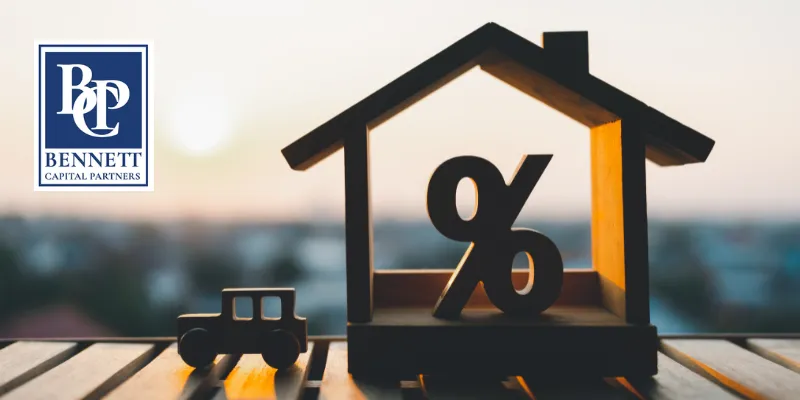
When considering refinancing a mortgage for home improvements, important factors to consider include understanding one's needs, comparing loan options, and weighing the pros and cons.
It is important to consider the reasons for refinancing and the amount of equity that can be accessed for renovations. Evaluating the various loan options available can help determine which option best meets the individual needs.
Additionally, it is important to consider the pros and cons of each loan option, such as the interest rates, the monthly payment, and the length of the loan.
Ultimately, the right refinancing option for home improvements should be the one that meets the individual's needs and circumstances.
Understand Your Needs
In order to select the ideal mortgage refinancing option for home improvements, a thorough understanding of one's needs is essential. This involves assessing the purpose and extent of planned renovations, as well as evaluating financial goals and constraints.
By comprehending specific requirements, homeowners can make informed decisions about unlocking equity in their property through refinance options designed for funding renovations. Refinancing for home improvements allows individuals to tap into their home's equity and use it towards enhancing the value or comfort of their residence.
To best utilize this opportunity, potential borrowers should consider factors such as renovation costs, available equity, desired loan terms, and interest rates before selecting a suitable refinancing solution. A comprehensive assessment of these aspects will enable homeowners to choose an optimal method of financing that aligns with both short-term renovation plans and long-term financial objectives.
Moreover, researching different types of home renovation financing options enables homeowners to identify those that cater explicitly to their unique circumstances. These may include cash-out refinance loans, which permit borrowing against a portion of accumulated equity; home equity lines of credit (HELOC), offering flexible access to funds over time; or even government-backed programs tailored for energy-efficient upgrades.
Ultimately, by thoroughly understanding individual needs and examining various means of using equity for improvements, homeowners can confidently proceed with securing the most appropriate form of mortgage refinancing for achieving their desired renovation outcomes.
Compare Loan Options
In the pursuit of identifying the ideal mortgage refinancing option for home improvements, it is vital to compare various loan alternatives that cater to specific renovation needs and financial objectives. By evaluating diverse refinance solutions, homeowners can determine which approach best aligns with their goals while unlocking equity in an efficient manner.
This process necessitates a meticulous examination of factors such as interest rates, repayment terms, fees, and eligibility criteria associated with distinct home renovation loans. Comparing these loan options allows individuals to weigh the benefits and drawbacks of each alternative before making an informed decision regarding how they will utilize their home's equity to fund renovations.
For instance, borrowers may explore cash-out refinance loans or home equity lines of credit (HELOC) depending on whether they require a lump sum upfront or prefer flexible access to funds over time. Furthermore, government-backed programs designed for energy-efficient upgrades should be considered by those seeking eco-friendly improvement opportunities.
Through this comprehensive comparison process, potential borrowers can confidently select the most suitable refinancing solution that optimizes both short-term renovation plans and long-term financial strategies. As a result, homeowners are better equipped to make prudent decisions about leveraging their property's value for achieving desired outcomes in enhancing its comfort and appeal.
Weigh Pros And Cons
Upon identifying potential mortgage refinancing options for home improvements, it is essential to thoroughly weigh the pros and cons of each solution in order to maximize benefits while minimizing drawbacks.
This article section delves into the importance of conducting an impartial analysis on various loan alternatives that can help unlock a home's equity for renovation purposes. By acknowledging both advantages and disadvantages associated with distinct refinance choices, homeowners can gain a holistic understanding of how their decision may impact their financial situation and renovation goals.
Assessing the pros and cons entails scrutinizing factors such as interest rates, repayment terms, fees, eligibility criteria, tax implications, and ease of accessing funds. Borrowers should also take into account any specific features or requirements pertaining to eco-friendly upgrades or government-backed programs designed to support energy-efficient renovations.
By doing so, individuals become better equipped to make educated decisions about which refinancing option aligns best with their personal circumstances and long-term objectives.
Ultimately, this thorough evaluation process enables homeowners to select the most appropriate mortgage refinancing alternative for funding their desired home improvements. Such informed decision-making leads not only to successful completion of renovation projects but also ensures optimal utilization of resources by tapping into available equity in a strategic manner.
Tips For A Successful Home Improvement Refinancing

Home improvement refinancing can be a financially beneficial option to unlock the equity of a home in order to make renovations.
When considering home improvement refinancing, it is important to analyze the equity of the property and determine the financial feasibility of the project.
To ensure the best possible deal, comparison shopping between different lenders is recommended to determine the best interest rate for the refinancing.
When consolidating multiple loans into one home improvement refinancing, homeowners should make sure that the new loan is more beneficial than the original ones.
Analyzing Equity
Analyzing equity is a crucial step when considering mortgage refinancing for home improvements. Unlocking the home's equity can provide homeowners with the necessary funds to carry out renovations and enhance the overall value of their property.
To determine whether tapping into this equity is an appropriate option, it is important to assess how much has been amassed over time through regular mortgage payments and increases in property value.
One method that enables homeowners to access the cash needed for renovations is a cash-out refinance. This type of mortgage refinancing allows individuals to replace their existing loan with a new one while simultaneously borrowing more than they currently owe on their home.
The excess amount borrowed can then be used for making desired home improvements or financing other needs, such as education costs or consolidating debt. While Rocket Mortgage refinance offers competitive rates and terms for those looking to tap into their home equity, it is essential to shop around and compare various lenders' offerings before deciding on the most suitable solution.
In conclusion, unlocking equity for renovations through mortgage refinancing should be approached cautiously by conducting thorough research and evaluating all available options. By analyzing factors such as current market conditions, individual financial situations, and long-term goals, homeowners can make informed decisions that will ultimately benefit them both financially and personally.
Comparison Shopping
In light of the importance of unlocking equity for home improvements through mortgage refinancing, one crucial aspect that homeowners should not overlook is comparison shopping.
This process entails evaluating various refinance options and loan terms offered by different lenders to identify the most favorable interest rates and conditions for a borrower's specific situation.
By engaging in comparison shopping, individuals can ensure they are selecting the best possible solution when it comes to tapping into their home equity for renovations.
Comparison shopping involves comparing cash-out refinance offers from multiple lending institutions, as well as examining factors such as closing costs, application fees, appraisal requirements, and other associated expenses.
Thorough research enables borrowers to gain a comprehensive understanding of the potential benefits and drawbacks of each option before committing to any particular lender or loan product.
In addition, seeking advice from financial professionals or consulting online resources can also provide valuable insight and guidance during this decision-making process.
Ultimately, engaging in comparison shopping when considering mortgage refinancing for home improvements allows homeowners to make informed choices that align with their individual needs and long-term goals.
By carefully assessing available options and negotiating favorable loan terms with prospective lenders, borrowers can maximize the value derived from leveraging their accumulated equity towards enhancing their property's overall appeal and functionality.
Conclusion
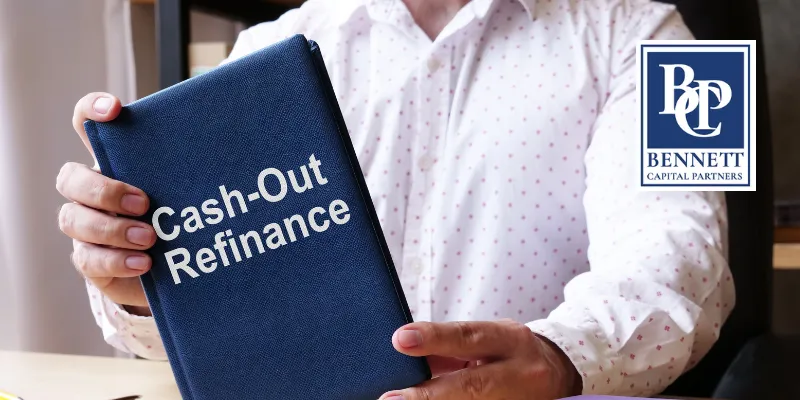
In conclusion, mortgage refinancing for home improvements provides a viable option for homeowners to unlock their property's equity and finance necessary renovations.
By opting for cash-out refinancing, home equity loans, or home equity lines of credit (HELOC), individuals can invest in enhancing the value and functionality of their homes while potentially benefiting from lower interest rates.
It is essential for homeowners to carefully consider different financing options available, taking into account factors such as loan terms, interest rates, and potential tax implications.
This will ensure that they make informed decisions leading to successful home improvement projects and financial outcomes.
FAQ's
How does a cash-out refinance work for home improvements?
A cash-out refinance involves replacing your existing mortgage with a new loan for more than your current balance. You then receive the difference in cash, which can be used to fund your home improvement projects. This allows you to tap into your home's equity and use it for renovations, potentially increasing your property's value.
What are the advantages of using a cash-out refinance for home improvements?
Some benefits of cash-out refinancing for home improvements include potentially lower interest rates compared to other loan options, tax-deductible mortgage interest, the possibility of increasing your home's value, and the ability to consolidate debt by refinancing other high-interest loans.
What is the difference between a cash-out refinance and a home equity loan?
Both options allow you to tap into your home's equity for renovations. However, a cash-out refinance replaces your current mortgage with a new loan, while a home equity loan is a separate loan in addition to your existing mortgage. Your choice will depend on your financial situation, interest rates, and desired repayment terms.
How much equity do I need for a cash-out refinance?
Lenders typically require you to have at least 20% equity in your home for a cash-out refinance. The maximum amount you can borrow will depend on factors such as your credit score, income, and the appraised value of your property.
Are there any drawbacks to using a cash-out refinance for home improvements?
Some potential drawbacks of a cash-out refinance include extending the term of your mortgage, potentially higher interest rates if market conditions change, closing costs, and the possibility of losing your home if you cannot make the new loan payments. It's essential to carefully weigh the pros and cons before deciding on this option.
Related Articles in Our Blog Posts on Refinancing
Looking for more information on refinancing your mortgage? Check out these informative articles:
Cash-Out Refinancing Vs. Rate-And-Term Refinancing: Which One Is Right For You? - Learn about the differences between these two types of refinancing and which one may be the best fit for your financial situation.
How To Calculate Your Break-Even Point For Refinancing: A Step-By-Step Guide - This comprehensive guide will walk you through the process of determining your break-even point for refinancing, helping you make an informed decision.
Mortgage Refinancing For Home Improvements: Unlocking Your Home's Equity For Renovations - Discover how refinancing your mortgage can help you fund home improvement projects and increase the value of your property.
Refinancing Your Adjustable-Rate Mortgage (ARM) To A Fixed-Rate Mortgage: Why And How To Do It - Considering making the switch from an adjustable-rate mortgage to a fixed-rate mortgage? Learn about the benefits and how to do it in this helpful article.
Mortgage Refinancing in Florida: The Ultimate Guide to Lowering Your Monthly Payments & Saving Money - Learn about the benefits of mortgage refinancing in Florida, eligibility requirements, costs, and more in this ultimate guide.
Streamline Refinancing: A Simplified Process For FHA, VA, And USDA Loans - Find out how to simplify the refinancing process for FHA, VA, and USDA loans.
The Costs Of Refinancing: Understanding Closing Costs, Fees, And Potential Savings - Get a breakdown of the costs and fees associated with refinancing, as well as potential savings.

Philip Bennett
Philip is the owner and Licensed Mortgage Broker at Bennett Capital Partners Business NMLS# 2046862. He earned his degree in Accounting and Finance from Binghamton University and holds a Master's Degree in Finance from NOVA Southeastern University. With more than 20 years of experience, Philip has been a leader in the mortgage industry. He has personally originated over $2 billion in residential and commercial mortgages.
Learn more about Philip Bennett's background and experience on our Founder's page. Whether you're a first-time homebuyer or a seasoned real estate investor, our team is here to help you achieve your real estate goals. Don't wait any longer, contact us today and let us help you find the right mortgage for your needs.
Discover helpful tips and tricks on mortgages by reading our blog posts
The Ultimate Guide To VA Cash Out Refinance: Everything You Need To Know to learn bouse taking equity out of your house using a VA Loan. Click here to access this resource
Understanding Co-op Financing: Mortgages For Co-ops Explained. To learn more about how this program can help you purchase your Co-op. Click here to read the full article
Mortgage Solutions for Newly Employed Individuals: Exploring Job Offer Loans. To learn more about how this program can help you purchase your dream. Click here to read the full article
DSCR loan program: debt service coverage ratio mortgage | Bennett Capital Partner To learn more about how this program can help you with your investment objectives. Click here to read the full article
Can You Still Get a No-Doc Mortgage in 2023? To learn more about how this program can help you get your dream mortgage. Click here to read the full article
How to Get Foreclosure Bailout Mortgages: A Step-by-Step Guide. To learn more about how this program can help you with your foreclosure bailout. Click here to read the full article
How to Qualify for an FHA Loan in Miami: The Complete Guide. To learn what the FHA loan limits are. Click here to read the full article.
Can I Get a Bank Statement Cash Out Refinance Loan? To learn more about how this program can help you get cash out of your home. Click here to read the full article
